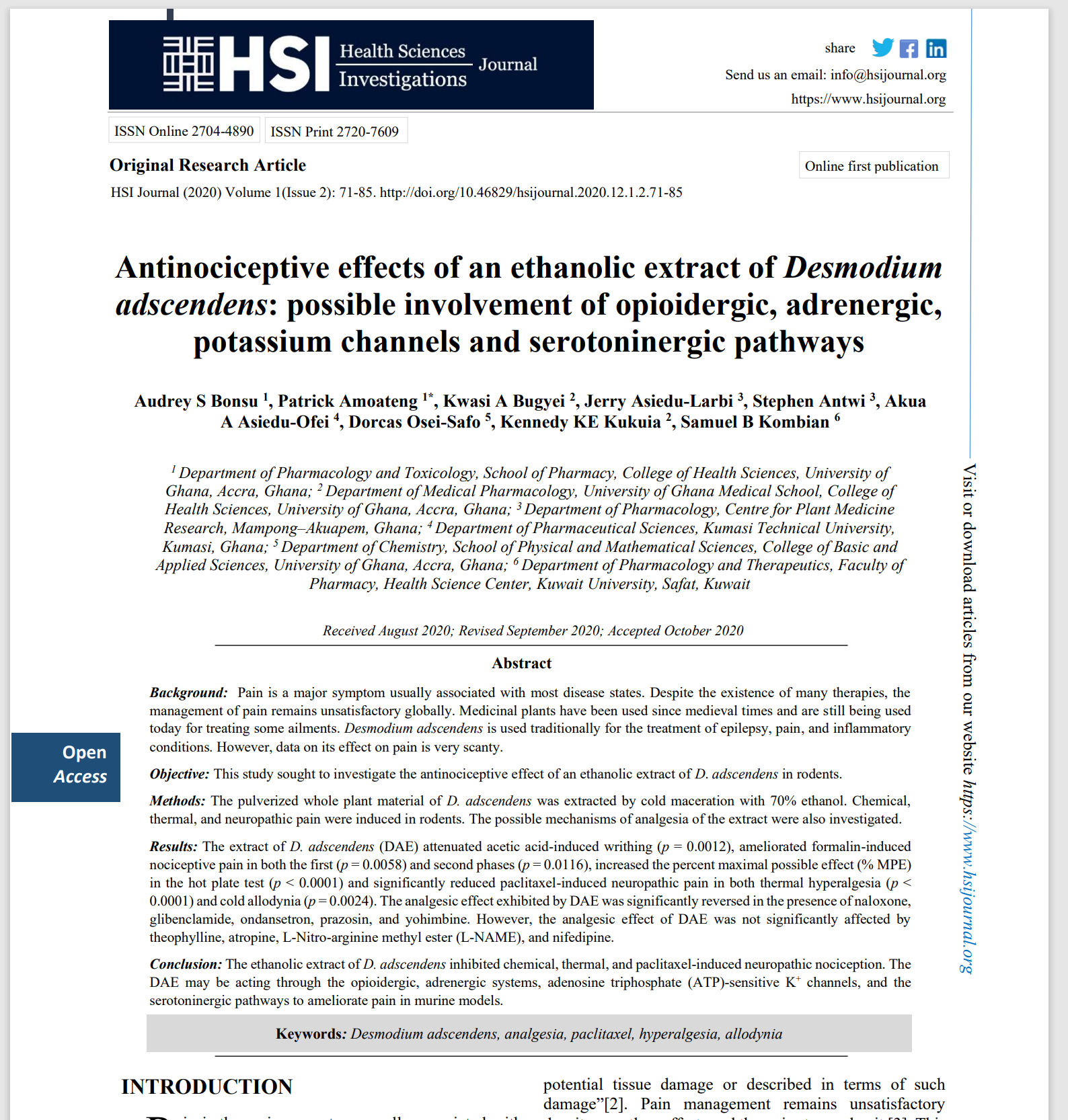Antinociceptive effects of an ethanolic extract of Desmodium adscendens: possible involvement of opioidergic, adrenergic, potassium channels and serotoninergic pathways
Antinociceptive effects of an ethanolic extract of Desmodium adscendens
Abstract
Background: Pain is a major symptom usually associated with most disease states. Despite the existence of many therapies, the management of pain remains unsatisfactory globally. Medicinal plants have been used since medieval times and are still being used today for treating some ailments. Desmodium adscendens is used traditionally for the treatment of epilepsy, pain, and inflammatory conditions. However, data on its effect on pain is very scanty.
Objective: This study sought to investigate the antinociceptive effect of an ethanolic extract of D. adscendens in rodents.
Methods: The pulverized whole plant material of D. adscendens was extracted by cold maceration with 70% ethanol. Chemical, thermal, and neuropathic pain were induced in rodents. The possible mechanisms of analgesia of the extract were also investigated.
Results: The extract of D. adscendens (DAE) attenuated acetic acid-induced writhing (p = 0.0012), ameliorated formalin-induced nociceptive pain in both the first (p = 0.0058) and second phases (p = 0.0116), increased the percent maximal possible effect (%MPE) in the hot plate test (p < 0.0001) and significantly reduced paclitaxel-induced neuropathic pain in both thermal hyperalgesia (p < 0.0001) and cold allodynia (p = 0.0024). The analgesic effect exhibited by DAE was significantly reversed in the presence of naloxone, glibenclamide, ondansetron, prazosin, and yohimbine. However, the analgesic effect of DAE was not significantly affected
by theophylline, atropine, L-Nitro-arginine methyl ester (L-NAME), and nifedipine.
Conclusion: The ethanolic extract of D. adscendens inhibited chemical, thermal, and paclitaxel-induced neuropathic nociception. The DAE may be acting through the opioidergic, adrenergic systems, adenosine triphosphate (ATP)-sensitive K+ channels, and the serotoninergic pathways to ameliorate pain in murine models.


